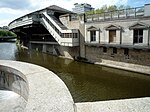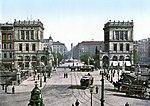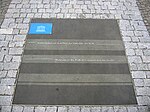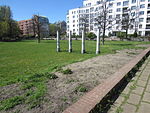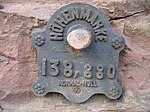Hallesches Tor
AC with 0 elementsBuildings and structures in Friedrichshain-Kreuzberg

The Hallesches Tor was located in today's Berlin district Kreuzberg south of Mehringplatz. Today, as a historic monument listed underground station on the site of the former gate bears the name Hallesches Tor. It is a major transfer point for the underground lines / (here as Hochbahn) and as well as the bus lines 248 (Berlin Ostbahnhof - Breitenbachplatz via Südkreuz) and M41 (Hauptbahnhof via Potsdamer Platz - Baumschulenstraße). The station is connected by the Hallesche-Tor-Brücke with the Blücherplatz to the south. The Amerika-Gedenkbibliothek and the nearby Jewish Museum contribute to the heavy visitor traffic in the area around the Hallesches Tor.
Excerpt from the Wikipedia article Hallesches Tor (License: CC BY-SA 3.0, Authors, Images).Hallesches Tor
Hallesches Ufer, Berlin Kreuzberg
Geographical coordinates (GPS) Address Website Nearby Places Show on map
Geographical coordinates (GPS)
| Latitude | Longitude |
|---|---|
| N 52.497777777778 ° | E 13.391111111111 ° |
Address
U Hallesches Tor
Hallesches Ufer
10969 Berlin, Kreuzberg
Germany
Open on Google Maps
